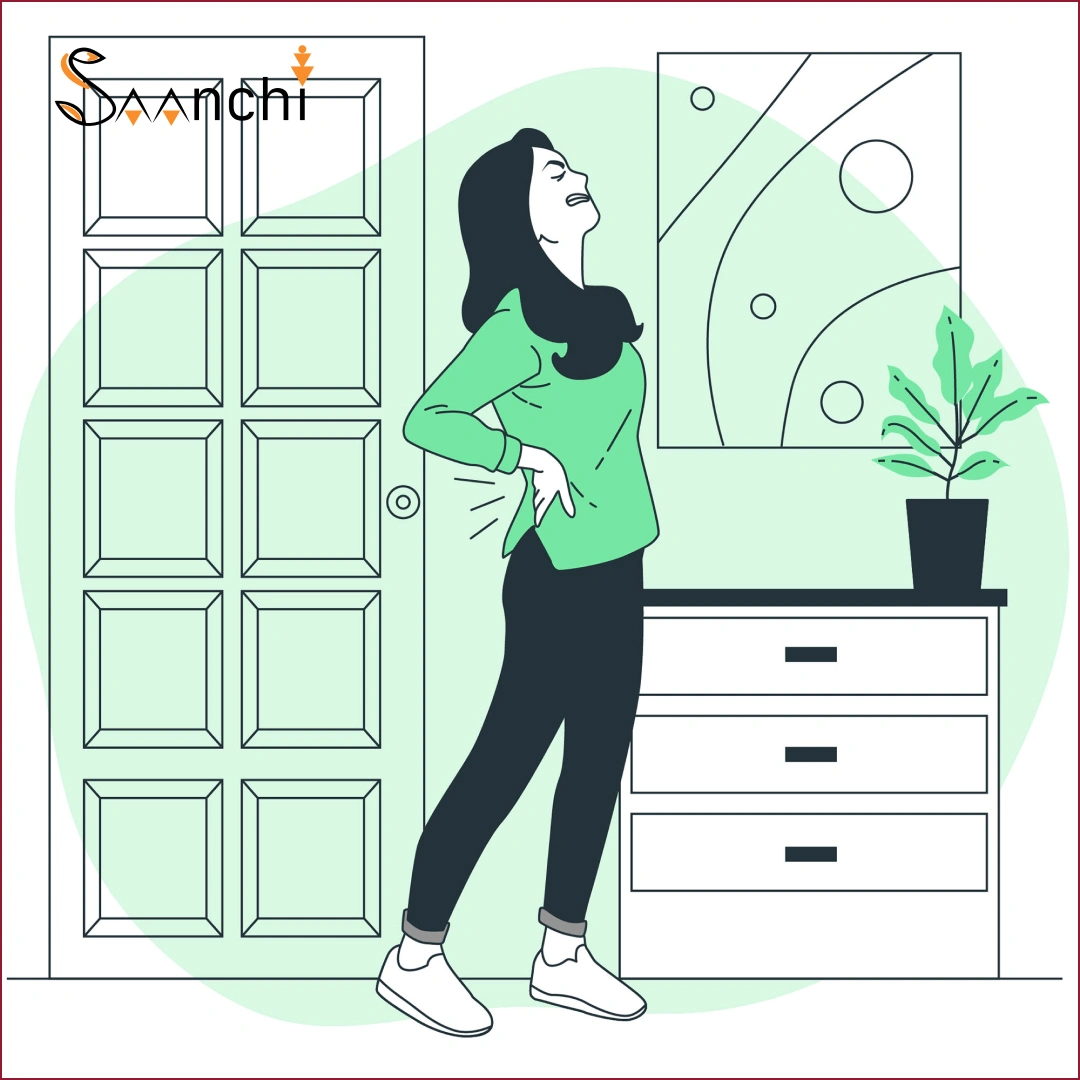Experiencing cramps and lower back pain after menopause is a common challenge for many women. These discomforts, primarily driven by hormonal shifts, can significantly impact the quality of life. Understanding the root causes and implementing effective management strategies is crucial for maintaining well-being. In this blog, we will explore the causes, symptoms, and ways to manage cramps and lower back pain after menopause.
What Causes Cramps and Lower Back Pain After Menopause?
Hormonal fluctuations and age-related changes are the primary culprits of these post-menopausal discomforts. Here are the key reasons:
- Hormonal Changes
- The decline in estrogen levels leads to muscle stiffness and joint pain.
- Hormonal imbalances can exacerbate tension in the pelvic and lower back regions.
- Bone Density Loss
- Reduced estrogen increases the risk of osteoporosis, a condition where bones become fragile and prone to fractures, leading to chronic back pain.
- Weakening of the vertebrae can also cause compression in the spine, contributing to pain.
- Weight Gain
- Metabolic changes during menopause often result in weight gain.
- The added weight strains the lower back and increases the likelihood of muscle tension.
- Pelvic Muscle Changes
- Even after menopause, residual symptoms of endometriosis or fibroids can cause cramping and pelvic pain.
- Muscle loss in the pelvic floor region leads to reduced support for the lower back and abdomen.
- Arthritis and Joint Inflammation
- Menopause may worsen arthritis symptoms, causing joint pain that radiates to the back.
- Decreased lubrication in joints contributes to stiffness and discomfort.
Symptoms to Watch For
Cramps and back pain after menopause can manifest in various ways. Common symptoms include:
- Persistent ache or sharp pain in the lower back.
- Radiating pain from the pelvic area to the legs.
- Stiffness in the back, especially after prolonged sitting or sleeping.
- Spasms or cramps in the abdominal or pelvic region.
How to Manage Cramps and Lower Back Pain After Menopause
Managing cramps and lower back pain after menopause requires a holistic approach, including lifestyle changes, medical treatments, and alternative therapies:
- Lifestyle Modifications
- Exercise Regularly: Engage in low-impact activities such as walking, swimming, or yoga to strengthen muscles and improve flexibility.
- Healthy Diet: Include calcium-rich foods, vitamin D, and anti-inflammatory foods such as leafy greens, nuts, and fish. Avoid processed and sugary foods that may increase inflammation.
- Pain Relief Medications
- Over-the-counter options like ibuprofen and naproxen can alleviate pain and reduce inflammation.
- Consult a healthcare provider for prescription medications if pain is severe or persistent.
- Supplements for Bone Health
- Calcium and Vitamin D: Essential for maintaining bone density and preventing osteoporosis-related back pain.
- Magnesium: Supports muscle relaxation and can help reduce cramps.
- Physical Therapy
- A physical therapist can provide tailored exercises to improve posture, strengthen back muscles, and reduce pain.
- Alternative Therapies
- Acupuncture: This technique helps release tension and reduce pain by targeting specific pressure points.
- Massage Therapy: Can alleviate muscle stiffness and improve blood flow to affected areas.
- Heat and Cold Therapy
- Applying a heating pad or hot water bottle to the lower back can relax tight muscles.
- Ice packs can reduce inflammation and numb sharp pain.
When to Seek Medical Advice
While occasional cramps and back pain are common, seek medical attention if you experience:
- Pain that worsens over time or interferes with daily activities.
- Numbness or tingling in the legs.
- Symptoms of a possible fracture, such as severe pain after a fall.
Cramps and Back Pain: A Manageable Transition
The post-menopausal phase brings significant changes to a woman’s body, but understanding and addressing the causes of cramps and lower back pain can make the transition smoother. Combining healthy habits, medical interventions, and alternative therapies ensures a higher quality of life during this stage.
Saanchi: Supporting Women Through Every Phase of Life
At Saanchi, we prioritize the health and well-being of women during all stages of life. We offer resources, guidance, and community support to help you navigate post-menopausal changes with confidence and ease. Whether it’s expert advice or peer encouragement, Saanchi is here for you every step of the way.


